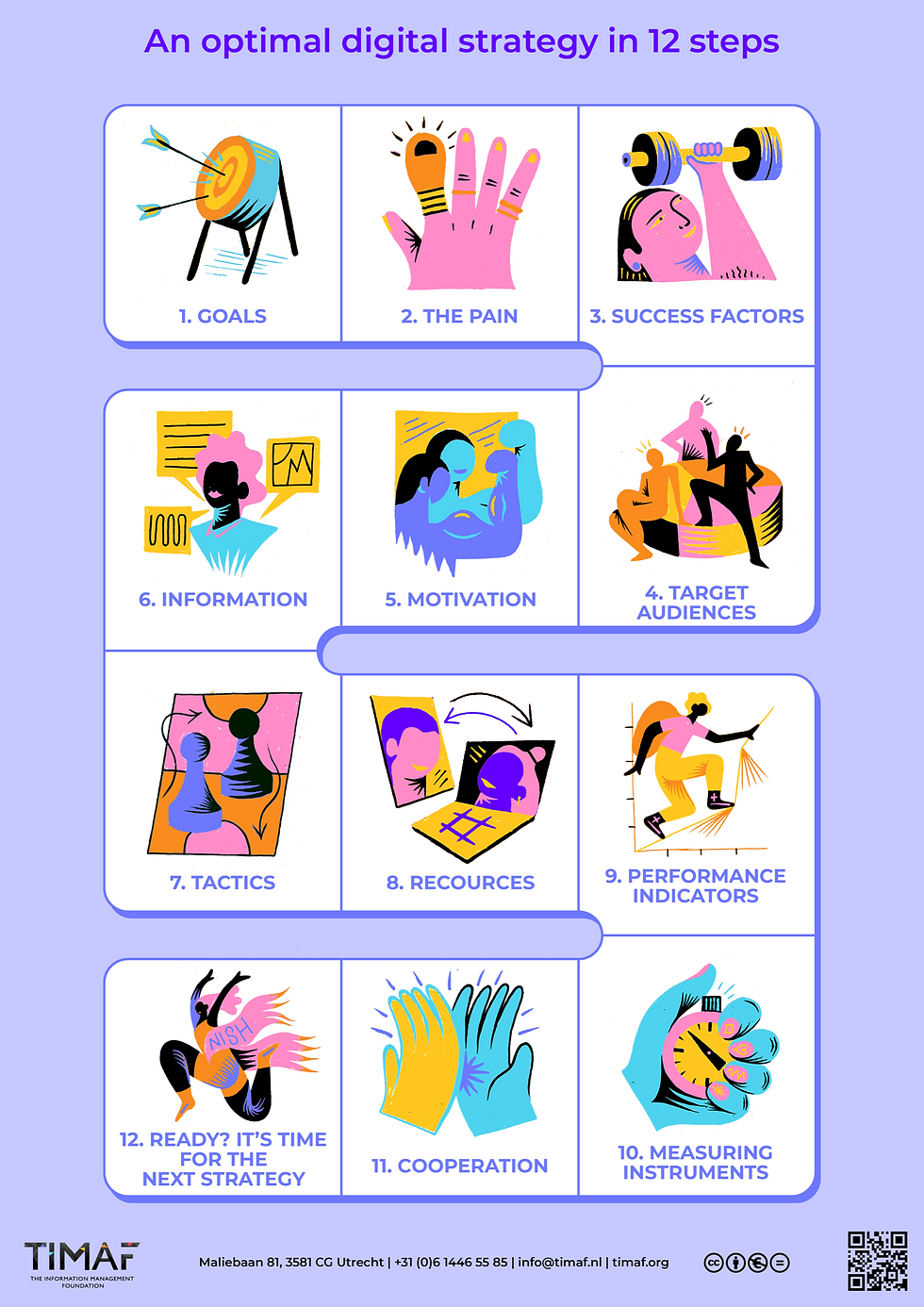A good strategy solves a problem
- Erik Hartman
- Jun 30, 2023
- 3 min read
It seems like an open door: a good strategy solves a problem. But unfortunately, I still see many strategies that do not start from a problem that needs to be solved. This leads to a toothless strategy that wastes the precious time of professionals and ultimately leads to nothing.

Many professionals - as well as management - feel no affinity for the "strategies" created by board or top management, with or without the help of a hired strategist. They do not see how the strategy helps them in their daily work or in the near future.
A strategy is not a template
Creating a strategy is difficult, so organisations are looking for examples and preferably templates to help them create their strategy. In two or three "healing sessions," you have created the whole package. Handy!
Handy, but problematic. Not only because people use the wrong template, but also because it prevents the difficult discussions about what is really the problem in the organization. Completing the template is elevated as the goal. And not solving the organisational problem.
It already goes wrong at the core
In 8 of those 10 strategy projects or workshops I do, I come across it in one form or another: the vision, mission, values (shoot me a leak) and from that the strategies.
Vision, mission, values. It's all fine. Things go wrong there too, but that's still relatively innocuous. The big problem is that from those three the strategies are distilled and that is impossible!
A goal is a goal, a strategy is a strategy
The strategies that come out of the vision, mission, values are generally some kind of goals. These are then often aspirations. I will give an example that I just plucked from a website. I found it after just one search. See https://www.achmeabank.nl/en/about-us/missie-en-strategie.
Achmea aims to be a leading player in retirement services in response to social and demographic trends and anticipating a shift to more individualized need for retirement solutions. Achmea strongly positioned itself in this market and offers consumers integrated propositions consisting of pension solutions, together with asset management, savings, investment and mortgages products.
This is not a strategy, but a very generic aspiration. You can probably find this 'strategy' at the competition too. No professional or manager will get enthusiastic about this.
Achmea Bank plays a key role in the retirement services strategy of Achmea. Our products form a critical component of the retirement services and of the solutions offered by the Achmea brands. Our mortgage & savings products and investment services are sold using two respected and well-known brand’s Centraal Beheer and Woonfonds.
This is not a strategy, but a product offering. What position does the bank have in this strategy? Why? What proposition does it fulfil?
We are the competence and service center for mortgage, retail savings products and investment services within Achmea. We originate and service mortgages for both the balance sheets of Achmea Bank and Achmea Pensioen & Leven N.V. (AP&L). And we provide the expertise in the fields of product management, balance sheet management, risk management and compliance.
This part talks about the role the bank plays for other entities of the organisation. Not strategy.
We aim to have processes that contribute to a high level of customer satisfaction and to be competitive in terms of costs. Customers expect outstanding service quality, simple and intuitive processes, 24/7 availability, self-service, transparency of products and pricing, personalization and tailoring and a consistent experience across channels.
This is a very generic goal ("we aim") that could be used by any commercial organisation. It's toothless and utterly meaningless.
What's also confusing, is that the Dutch version of this strategy is different and much worse in defining the strategy: https://www.achmeabank.nl/over-ons/missie-en-strategie.
A strategy solves a problem
In a previous blog post, I wrote: A strategy is an end-to-end process to make better, informed decisions that improve an organisation's performance. The strategy process starts with the need to improve the organisation and ends with the improvement achieved.
In a subsequent blog post, I will describe the minimum elements a good (business) strategy consists of. But just a hint: a good strategy always (!) solves a problem.
Create a digital strategy in 12 steps
Once a good business strategy is in place, it can be translated - when relevant - into a digital strategy. A digital strategy is a preconceived plan that identifies how the organisation can better achieve organisational goals with the optimal use of digital assets.

To help organisations with their digital strategy, TIMAF developed the digital strategy game that allows you to create a digital strategy in 12 steps.
You can apply this game directly in a workshop with colleagues, customers and suppliers.
The 12 steps of the digital strategy game have been brought together on a poster.
You can request the free Digital Strategy poster and share it with your colleagues.


Comments